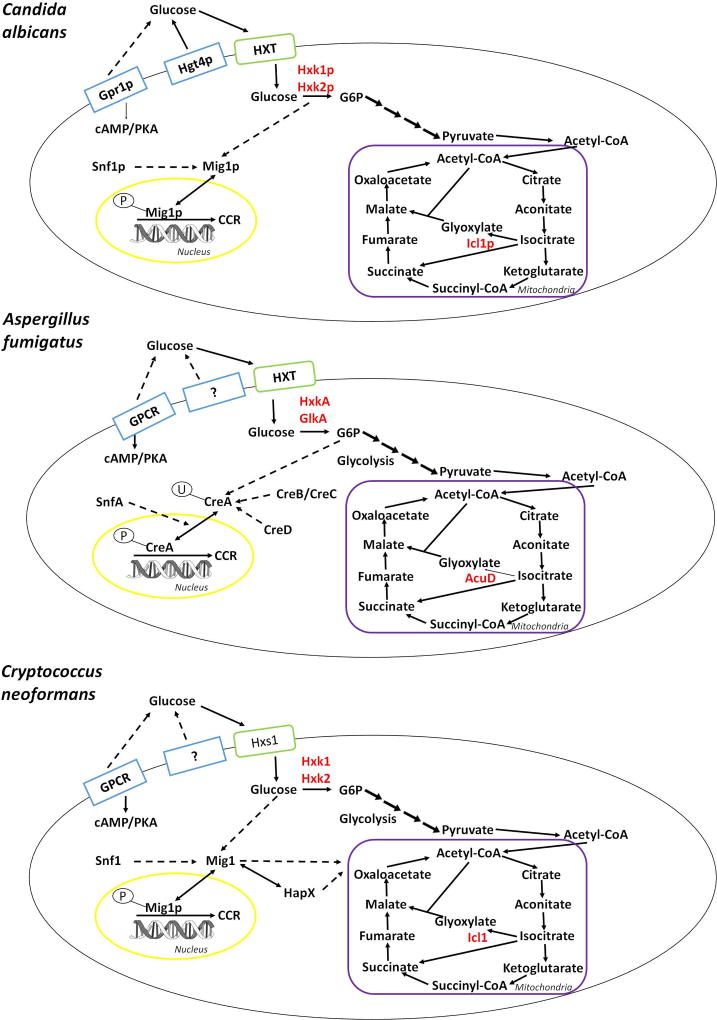Figure 1.
Glucose sensing, uptake and metabolic pathways in C. albicans, A. fumigatus and C. neoformans (blue boxes: confirmed and putative sensors; green boxes: confirmed and putative transporters; red = metabolic enzymes, solid arrows = confirmed cellular processes, dashed arrows = cellular processes that are not elucidated; yellow = nucleus; purple = mitochondria). Glucose is sensed and taken up into the cell by specific hexose transporters (HXT) and is subsequently phosphorylated by the carbohydrate kinases hexokinase (HXK) or glucokinase (GLK). Further metabolic utilisation occurs via glycolysis and the TCA (tricarboxylic acid) cycle. Glucose uptake and subsequent phosphorylation serve as signals for the carbon catabolite repressor (CCR) Mig1p/CreA/Mig1 to translocate to the nucleus and repress target genes. Several factors, such as the protein kinase SNF, the de-ubiquitinylation complex CreB/CreC or the transcriptional regulator of iron metabolism HapX, have been shown to be involved in CCR by either interacting directly or indirectly, with Mig1p/CreA/Mig1 in a species-dependent manner.

